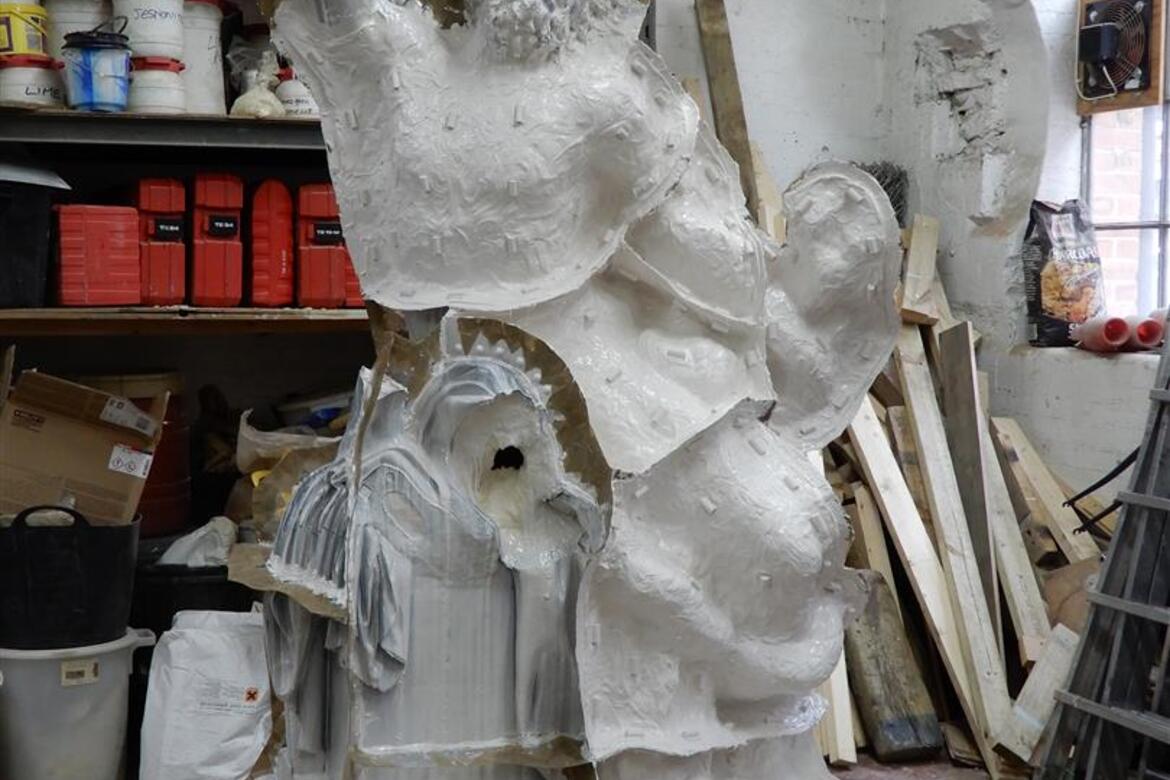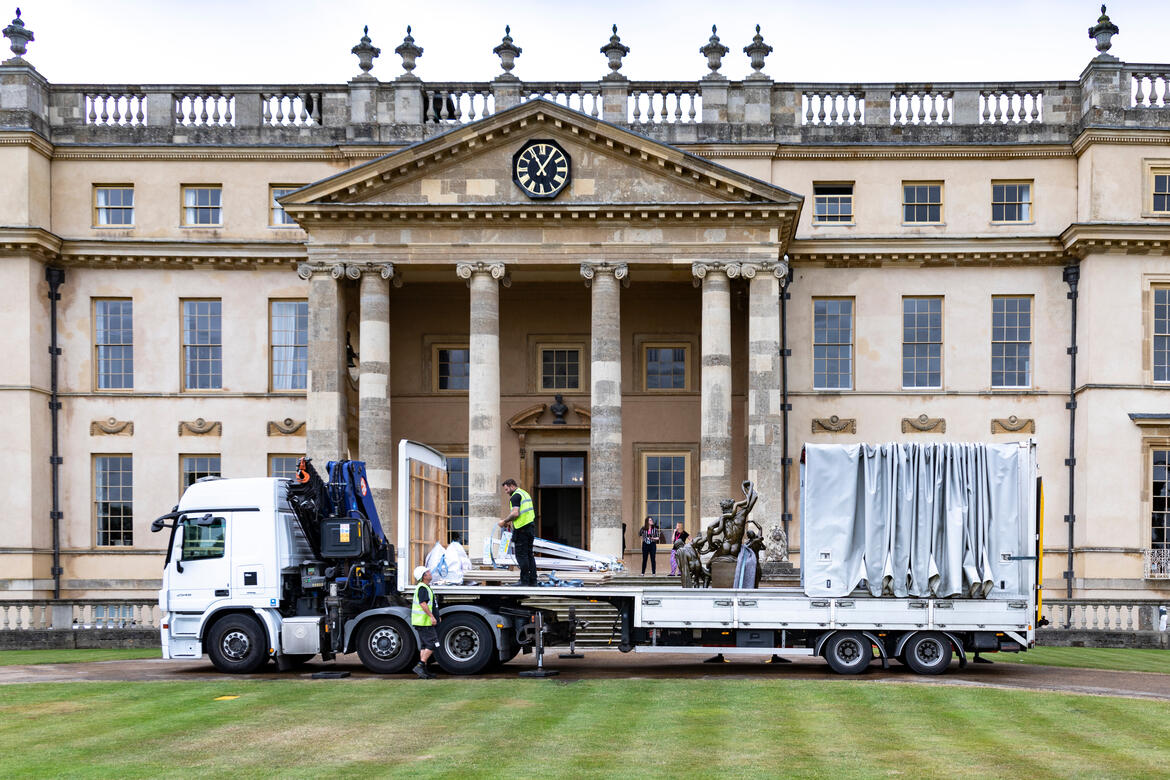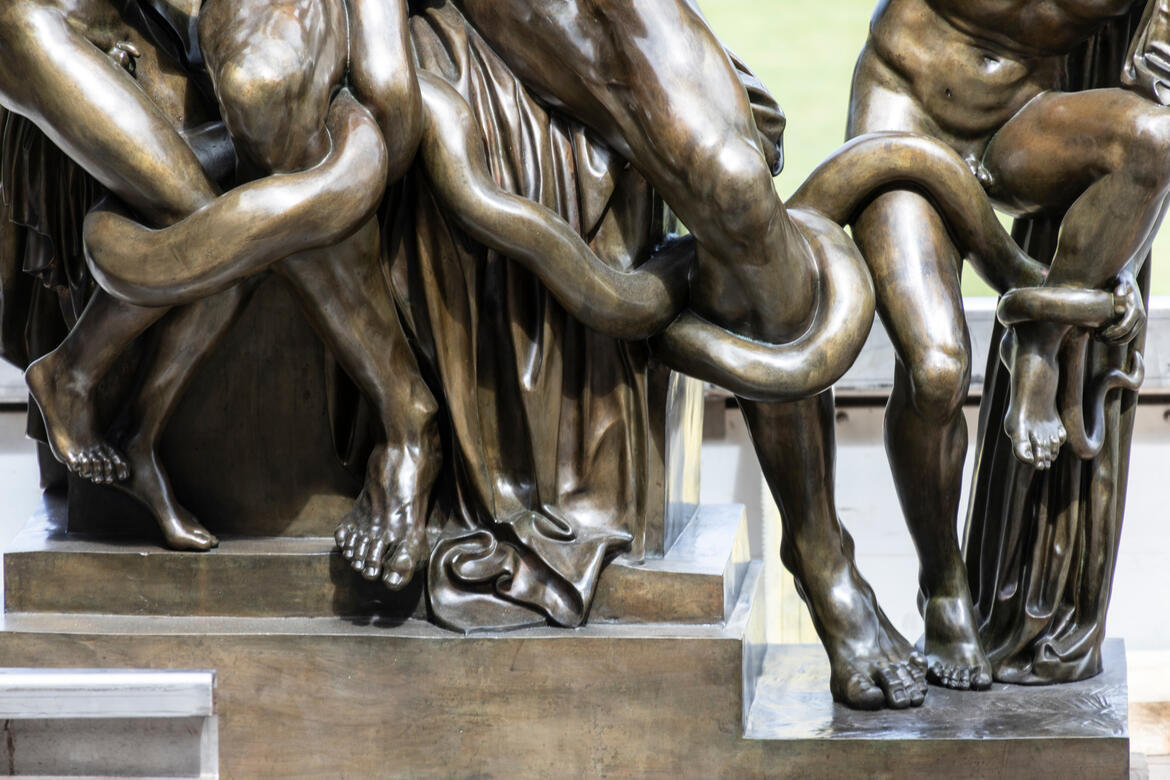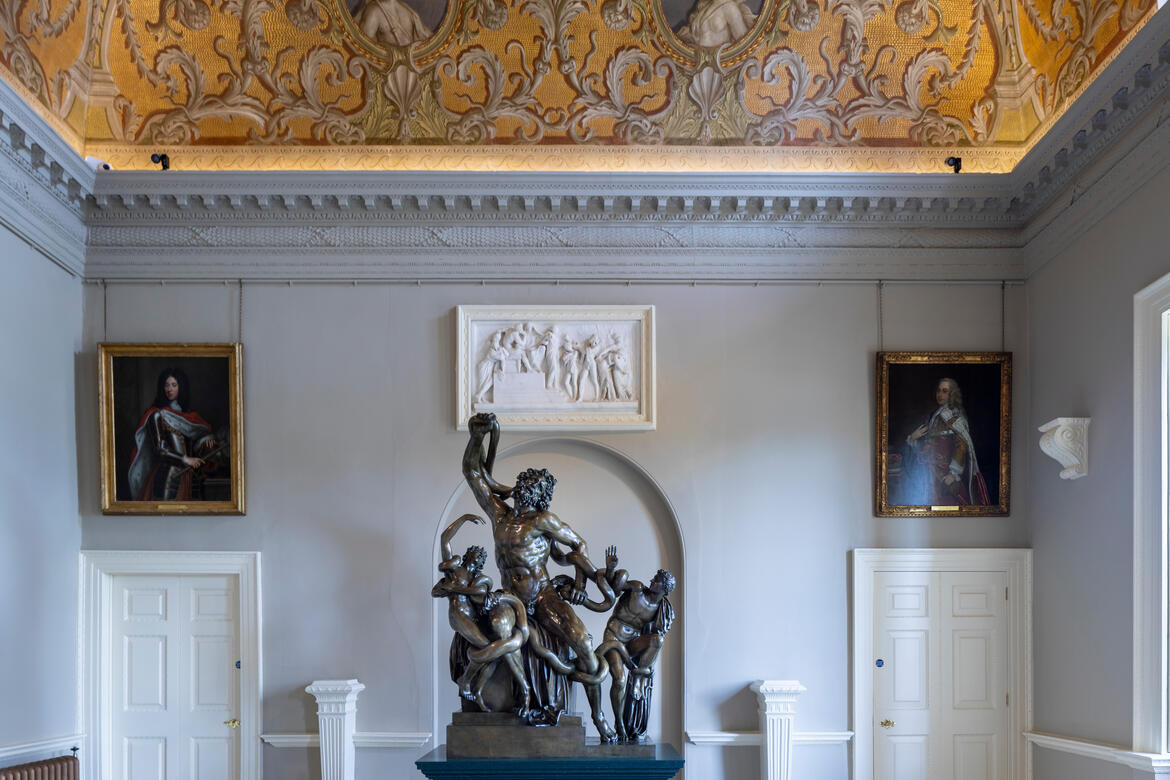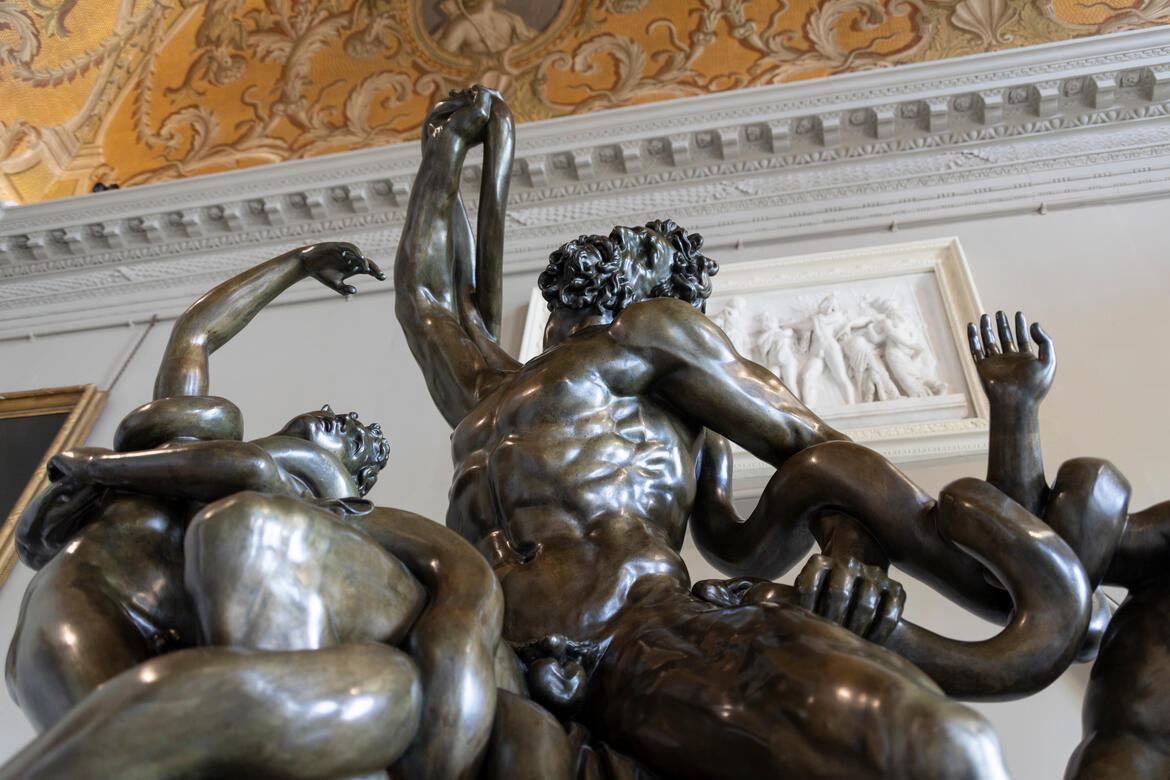The Fascinating Return of Laocoön to Stowe House
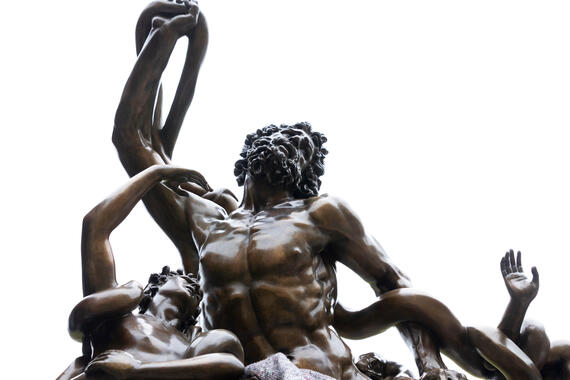
The first room I ever entered at Stowe House was the North Hall in June 2008. It was busy: students, parents, teachers racing through this tired and unnoticed thoroughfare. Whilst we politely waited there to be guided through the piano nobile, you could just see glimpses of a coffered dome and scagliola columns – The Marble Saloon – Stowe’s megastar room. Magpies to shiny things, we were drawn to this glowing triumph of Roman grandeur. WMF helped to restore the Marble Saloon in 2005 following Stowe’s inclusion on the World Monuments Watch in 2002 and 2004—the Saloon being the sparkling jewel in Stowe’s rather shabby crown. The North Hall was—“sorry, remind me which room that was again?”—easily forgotten…
Fast forward eleven years and I was back at Stowe because something exciting was happening: the formal re-opening of the North Hall. Since 2008 I had visited Stowe many times and concede that my initial assessment of the North Hall was undeserved. I didn’t look up, but if I had I would have seen a grubby yet majestic William Kent ceiling.
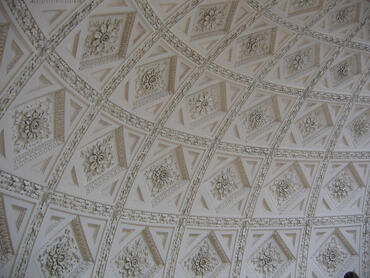
Since 2017, WMF has been involved in the research and conservation of the transformation of Kent’s North Hall. It is the last big project to be supported by WMF at Stowe, and involved the laying of a new floor, redecoration and re-lighting, and the introduction of a large statue of Laocoön and his sons, an original copy of that in the Vatican Museum.
And this is where things get interesting and the North Hall steps into the limelight.
Laocoön, a priest, was attacked with his two sons by giant sea serpents sent by the gods in revenge for warning his fellow Trojans of the duplicity Greeks and their wooden horse. Told in Virgil’s Aeneid, this grisly tale has been depicted in many artworks and statues, the oldest surviving of which is attributed to the Rhodes sculptors Hagesandros, Athanodoros and Polydoros, which stood in the palace of the emperor Titus. It is believed to have been sculpted between 42-20 BC; a copy of the Greek Hellenistic bronze was replicated for a wealthy Roman client.
Missing for many years after the sack of Rome, this famous statue was unearthed in a vineyard in Rome in January 1506 and identified by Michelangelo as the lost masterpiece. It was swiftly moved to the Vatican at the request of Pope Julius II, where it was much admired and frequently copied.
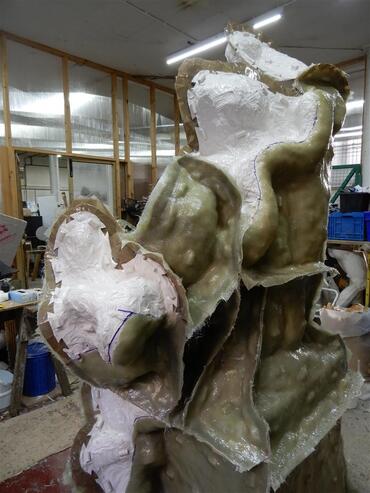
The Stowe Laocoön, a copy of the Vatican’s statue, was the work of Auguste-Jean-Marie Carbonneaux (1769-1843), originally commissioned for Mr. Watson Taylor. But Taylor’s financial ruin resulted in its first owner being William Beckford at Fonthill. It came to Stowe in 1823, when it was purchased by the First Duke of Buckingham and Chandos and placed in the North Hall, where it remained until 1848. The Stowe Laocoön was sold to the Duke of Hamilton in the 1848 sale of Stowe’s contents, and was sold again in 1882, purchased by Merthyr Guest of Inwood, where it remained in a garden for over 100 years.
It was historic paint specialist, Patrick Baty who discovered Laocoön whilst participating in a tour at Inwood. Patrick had worked at Stowe for many years and knew a version of Laocoön had once sat in the large niche on the right-hand side of the hall. He recognised it immediately and alerted Stowe colleagues who swiftly commissioned a copy. Step-up Rupert Harris, historic metalwork specialist and good friend of WMF and Stowe. Rupert’s team created a mould and cast a bronze replica of Carbonneaux’s original. A masterpiece of modern reproduction, the statue was reinstated in the North Hall in July 2019 where it’s settled splendidly in this newly conserved room.
The Marble Saloon will always be the star attraction, but there are now reasons to linger in the North Hall; Laocoön is back at Stowe!

